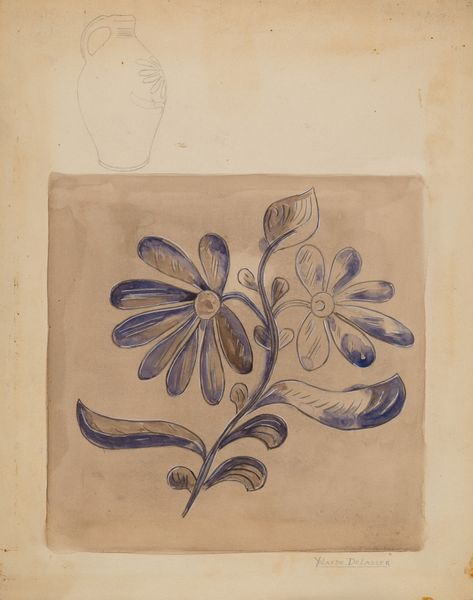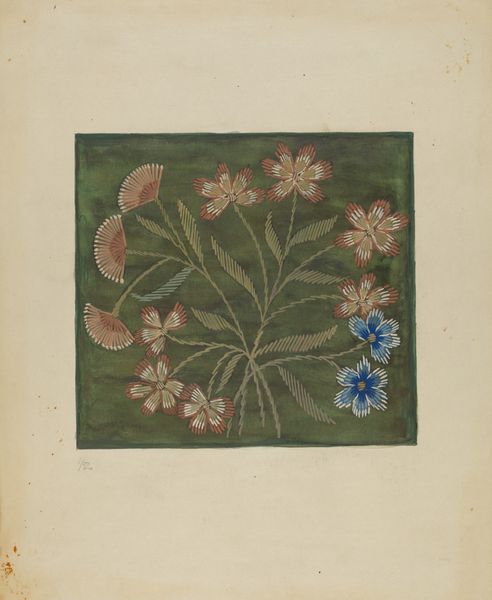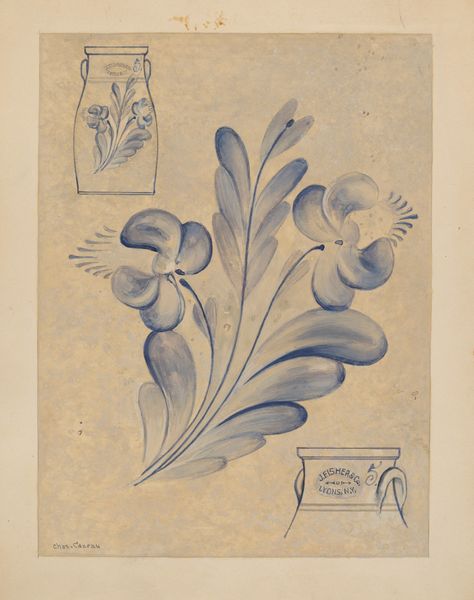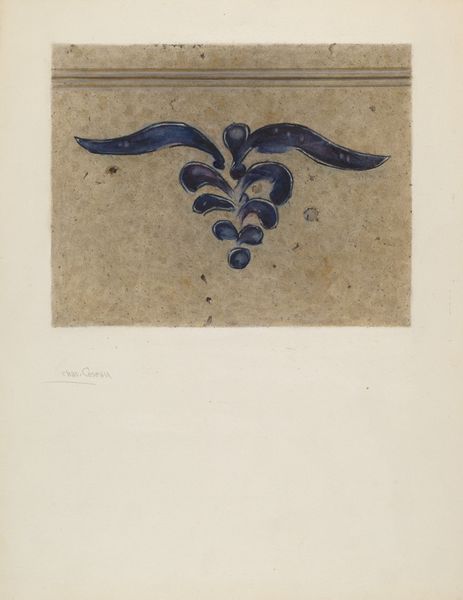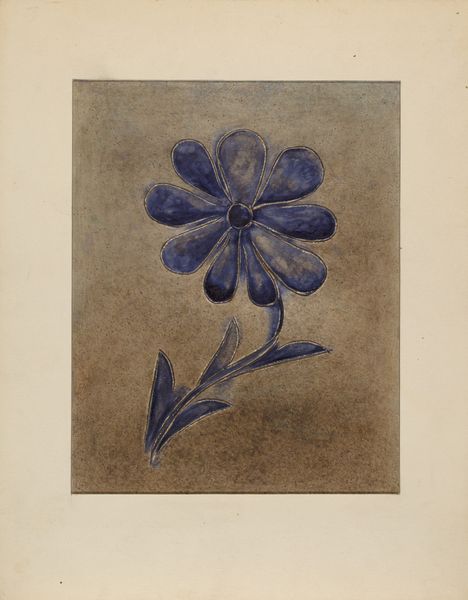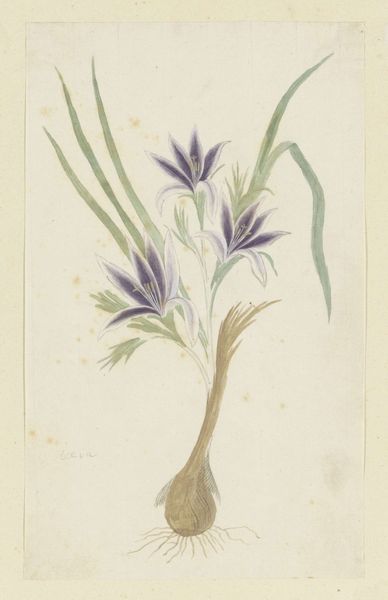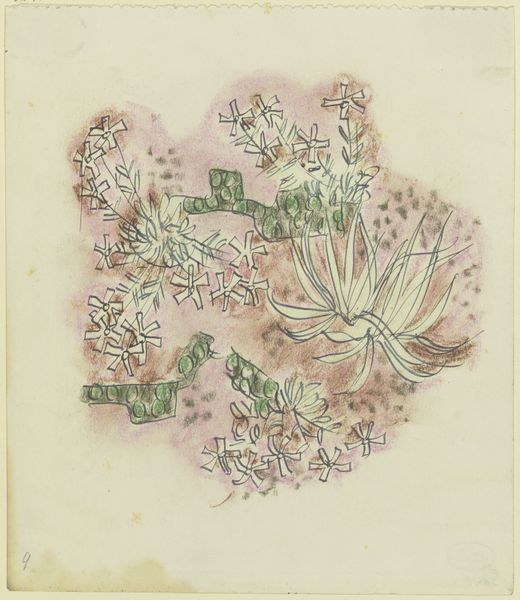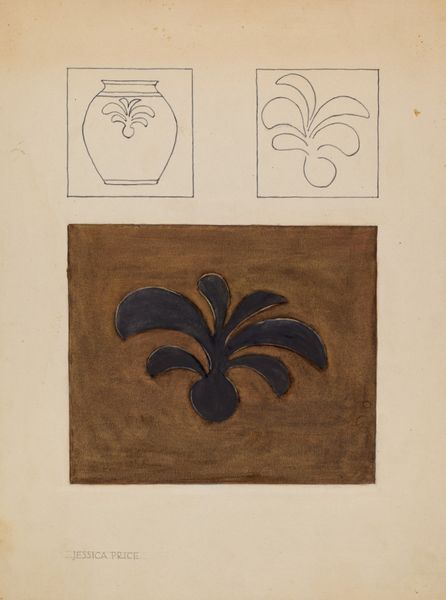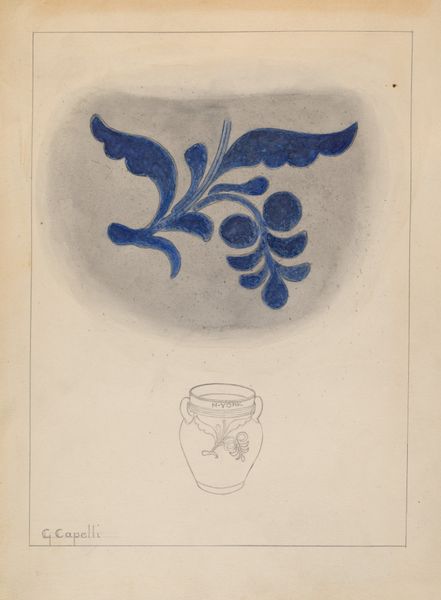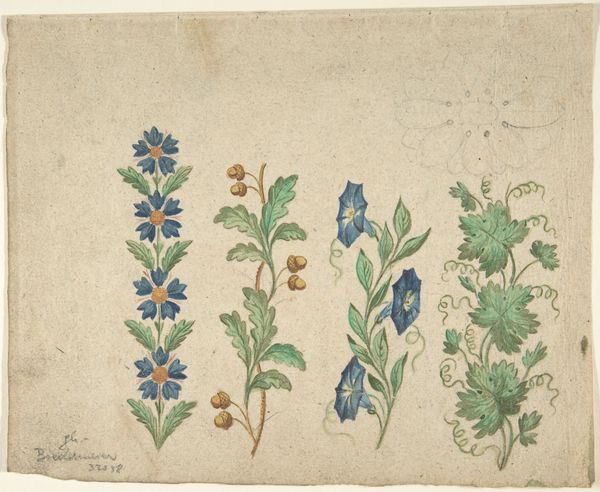
drawing, watercolor
#
drawing
#
water colours
#
watercolor
#
coloured pencil
#
geometric
#
abstraction
Dimensions: overall: 29 x 22.6 cm (11 7/16 x 8 7/8 in.) Original IAD Object: 12 1/4" High 5 5/8" Dia(top) 5 1/2" Dia(bot)
Copyright: National Gallery of Art: CC0 1.0
Curator: Looking at this work, "Jar" created circa 1936 using watercolor and colored pencil, I immediately sense a feeling of serenity. There’s a quiet confidence in the stark simplicity of its geometric flower against a warm tan background. What is your take on it? Editor: My attention is drawn to the almost architectural rigidity in its curves. Considering it was created in the mid-1930s, what could have been Charles Caseau's statement with its presentation as a kind of stoic modernist "bloom?" How does the floral abstraction disrupt notions of class or cultural identity in the period? Curator: The blue coloration offers interesting insights. Blue, particularly indigo, has held spiritual significance across cultures – referencing the divine, meditative states. And while abstraction allows for universal interpretations, doesn't the choice of floral imagery connect with symbols of growth and life? Perhaps it's speaking to resilience, during a time that the US and France both suffered from financial hardship and the rising tides of fascism? Editor: And within the geometric, one must think about gender. Flowers often hold feminine connotations, even stereotypes. Does Caseau disrupt this by rendering such imagery in such a firm, structural fashion? Perhaps offering commentary on imposed ideals of women within the period or offering some degree of empowerment by giving the feminine the guise of strength? Curator: Absolutely. Moreover, flowers can also symbolize ephemerality. Placing that next to those rigid, almost "steel-like" forms, we might explore conversations around permanence and fleeting moments – themes often explored through gender. The tension speaks volumes. Editor: Indeed. Thinking through Caseau’s “Jar” allows us to consider symbols of identity formation – strength, fluidity, or fragility, within broader discourses, making even seemingly simple sketches radical socio-political statements. Curator: Looking at it this way invites discourse regarding resilience that blooms in even the most hardened conditions. Editor: Thank you, it’s left me reconsidering imposed boundaries on social and cultural symbols and their relationship to their visual signifiers.
Comments
No comments
Be the first to comment and join the conversation on the ultimate creative platform.
